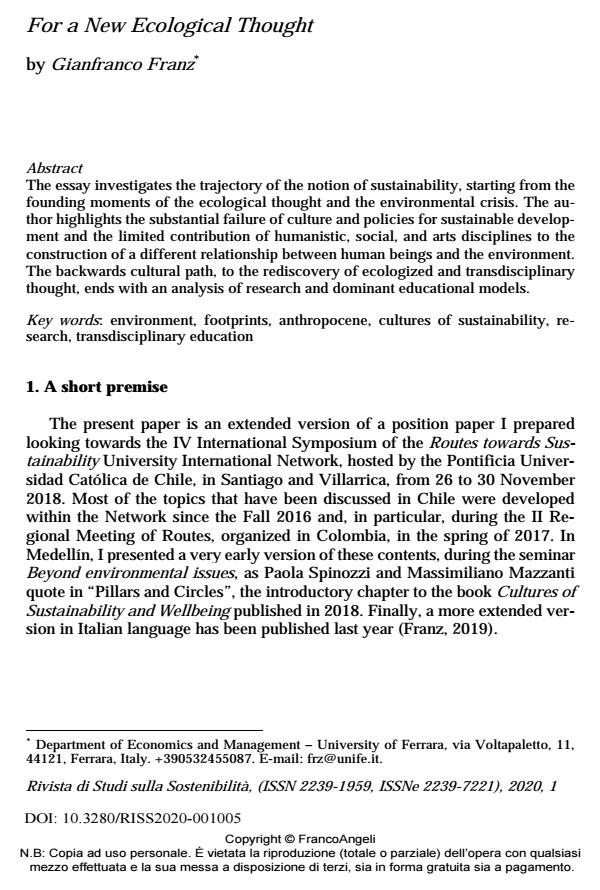For a New Ecological Thought
Journal title RIVISTA DI STUDI SULLA SOSTENIBILITA'
Author/s Gianfranco Franz
Publishing Year 2020 Issue 2020/1
Language English Pages 20 P. 71-90 File size 136 KB
DOI 10.3280/RISS2020-001005
DOI is like a bar code for intellectual property: to have more infomation
click here
Below, you can see the article first page
If you want to buy this article in PDF format, you can do it, following the instructions to buy download credits

FrancoAngeli is member of Publishers International Linking Association, Inc (PILA), a not-for-profit association which run the CrossRef service enabling links to and from online scholarly content.
The essay investigates the trajectory of the notion of sustainability, starting from the founding moments of the ecological thought and the environmental crisis. The author highlights the substantial failure of culture and policies for sustainable de-velopment and the limited contribution of humanistic, social, and arts disciplines to the construction of a different relationship between human beings and the envi-ronment. The backwards cultural path, to the rediscovery of ecologized and trans-disciplinary thought, ends with an analysis of research and dominant educational models.
Keywords: Environment, footprints, anthropocene, cultures of sustainability, re-search, transdisciplinary education
Gianfranco Franz, For a New Ecological Thought in "RIVISTA DI STUDI SULLA SOSTENIBILITA'" 1/2020, pp 71-90, DOI: 10.3280/RISS2020-001005